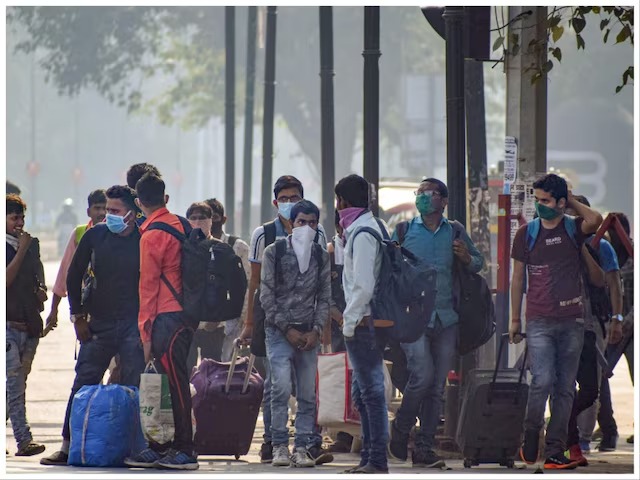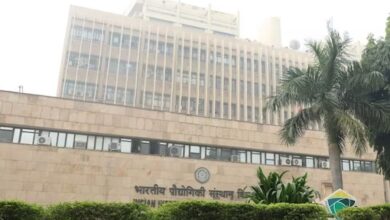Who Will Gain from the CAA? The Rajbanshis in Bengal, the Pak Hindu Refugees in Delhi, or Matuas? What Has Changed Recently?
Following a four-year hiatus, the government has now officially announced the Citizenship Amendment Act, 2019 regulations that will be enacted nationwide. even though nine states have previously implemented the CAA.

The announcement of the CAA will expedite the process of naturalization for many illegal non-Muslim migrants originating from Afghanistan, Pakistan, and Bangladesh. These immigrants were either in India illegally or on long-term visas up to this point.
WHO IS GOING TO BENEFIT?
At least 30,000 “persecuted” minorities, including Christians, Jains, Parsis, Sikhs, Buddhists, and Hindus from Bangladesh, Pakistan, and Afghanistan, might profit from the CAA, according to the Ministry of Home Affairs.
The CAA assumes that these groups’ members experienced discrimination because of their religion in these three nations. It states that any member of these groups who came to India before December 31, 2014, whether lawfully or illegally, from Pakistan, Afghanistan, or Bangladesh, is entitled to apply for Indian citizenship.
About 180 refugee households in Delhi’s Majnu Ka Tila neighborhood stand to gain from the publication of the CAA regulations. According to the refugee families, who spoke with ETV Bharat, they have been living in Delhi’s refugee camps for more than ten years. They claim they are unable to go elsewhere for employment and do not even own passports.
500 members of the Pakistani Hindu refugee community in Delhi, according to Dharamveer Solanki, who is regarded as their leader, will be granted citizenship, according to news agency PTI.
Uttar Pradesh and Rajasthan
Rajeeva Swarup, the former additional chief secretary of the state, said that around 17,574 non-Muslims and 331 Muslims from Pakistan who are in Rajasthan on long-term visas would benefit from the CAA.
Refugees from Bangladesh were relocated in 19 districts of BJP-ruled Uttar Pradesh, which was the first state to execute the Comprehensive Agreement. The Economic Times reports that some 440 Hindu refugee households who left Bangladesh during the Liberation War of 1971 have benefited in the Pilibhit area of Uttar Pradesh.
Based to studies carried out by CAA, there are around 42,000 Hindu refugees residing in 19 districts of Uttar Pradesh, including Pilibhit, Meerut, Muzaffarnagar, Agra, Bareilly, Lucknow, and Gorakhpur. 37,004 of these refugees are located in Pilibhit.
Bengal (West)
The Matua communities in Bongaon, Siliguri, and Hooghly are jubilant that their long-standing desire for the implementation of CAA has come true. Currently, they make up the second biggest portion of the population of West Bengal, behind Rajbanshis, with 17.4%.
Via the CAA, the BJP had offered citizenship to Matuas and other West Bengali refugees. They are mostly found in the 24 North and South Parganas, as well as in nearby districts like Cooch Behar, Malda, Nadia, and North and South Dinajpur.
The Matuas are members of West Bengal’s Namashudra (Dalit/SC) group. Harichand Thakur, who was born in Orakandi, Bengal, in 1812, was the founder of the cult. Following Bengal’s partition, they moved to Bengal and have since been courted by prominent political parties including the Left, BJP, and Trinamool Congress.
The CAA may also help the Rajbanshis, a different ethnic community from north Bengal that includes Hindu immigrants from Bangladesh. According to the 2011 census, the community comprises 37.7% of the overall population and 75.2% of the Scheduled Caste population.
The Rajbanshis are mostly residents of Jalpaiguri, North Dinajpur, South Dinajpur, Alipurduars, and Cooch Behar.
After CAA, what will change?
The Citizenship Act of 1955 prohibited undocumented immigrants from entering India. Individuals who did not have a valid travel document or who remained longer than allowed were considered foreigners, were not eligible to petition for citizenship, and were deported.
Under the CAA, immigrants who are Hindu, Buddhist, Jain, Parsi, or Christian and who come from Afghanistan, Bangladesh, or Pakistan are protected from prosecution if they enter India illegally or remain longer than allowed. The migrant had to reside in India for “not less than 11 years” in order to be eligible for citizenship under the previous legislation. It was lowered by CAA to “not less than five years” for minorities who qualified.
Members of the six groups are protected from prosecution under the Passport Act of 1920 and the Foreigners Act of 1946, which stipulate penalties for entering the nation unlawfully and remaining there while in possession of expired visas and permits.
After being enacted in December 2019, the CAA was signed into law by the president. Nationwide demonstrations ensued after its enactment.
Which states have completed the CAA yet?
The CAA is in effect in the following states: Madhya Pradesh, Uttar Pradesh, Gujarat, Rajasthan, Delhi, Maharashtra, Chhattisgarh, Haryana, and Punjab.
The CAA does not apply to much of the northeast. The Sixth Schedule to the Constitution exempts the tribal territories of Assam, Meghalaya, Mizoram, or Tripura, as well as the states of Arunachal Pradesh, Mizoram, Nagaland, and Manipur, from the requirements of the CAA.
According to the Home Ministry’s annual report for 2021–2022, at least 1,414 foreign nationals from non-Muslim populations in Bangladesh, Pakistan, and Afghanistan received Indian citizenship by naturalization or registration in accordance with the modified Citizenship Act of 1955.







